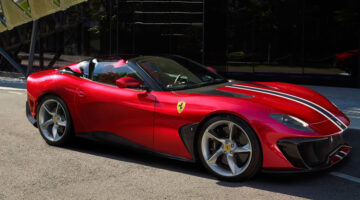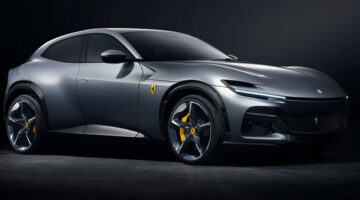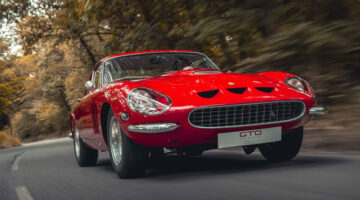Ferrari to offer range of limited series cars to collectors and special clients
Aston Martin has its continuation models, Porsche has Singer (kind of) and now Ferrari has Icona, its new concept for limited-edition series cars that trade on the company’s rich heritage. The first fruits of this project are these two: the Monza SP1 and SP2.
The two Monza models pay homage to the original Ferrari Barchetta, the 1947 166 MM, and the 750 and 860 Monza models that contested the gruelling Millie Miglia and the World Sports Car Championship.
Built on a new aluminium chassis derived from the 812 Superfast, the pair of Monza models are then clothed in a Kevlar and carbonfibre body that utilises the same production techniques employed by the company’s Formula 1 team. Clients and customers are then invited to select their desired configuration – either the conventional two-seater or the more driver-focussed single seater derivative.
Both are powered by the 812’s 6.5-litre naturally aspirated V12 engine, but with the help of variable inlet ducts and a recalibration of the ECU. Power is up to 798bhp (a 10bhp increase) so is now the most powerful V12 engine Ferrari has produced. Peak toque is 719Nm, the same as an 812 Superfast; the seven-speed dual-clutch gearbox and virtual four-wheel steering are both retained.
At 1500kg (dry) for the Monza SP1 (1520kg for the SP2) the first Icona car is 160kg lighter than a Superfast coupe on which it is based, it’s also 25mm wider. The carbon fibre body is 15 per cent lighter than that of the coupe and uses 20 square metres of the lightweight material. There’s also a new unique design of lighter 21-inch forged wheels.
In terms of performance Ferrari claims a 2.9-second 0-100kph time, 7.9-second 0-193kph and a top speed in excess of 290kph.
The Monza’s design was driven by a ‘single stroke of the pencil’ theory, drawing inspiration from its historic predecessors, but specifically referencing these old models and turning into a sort of retro pastiche.
Being bespoke, the body of the Monza required a unique LED headlight design to fit within the new front-hinged single-piece clamshell bonnet. There’s also a new full-width rear light bar. The absence of a roof also required the design and development of a ‘virtual windshield’ positioned ahead of the cockpit designed to deflect airflow over the driver.
Access to the Monza’s carbon-clad interior is via a pair of small dihedral doors, and whether you opt for the single or two-seater layout a carbon fibre brace dissects the cockpit. The intention was to design an interior that provides the closest to a Formula 1 driving experience as possible, whilst still being usable on the road.
Ferrari will confirm a price for the Monza at the Paris Motor Show next month, but don’t expect much change from $3 million.
This article originally appeared at
evo.co.uk





